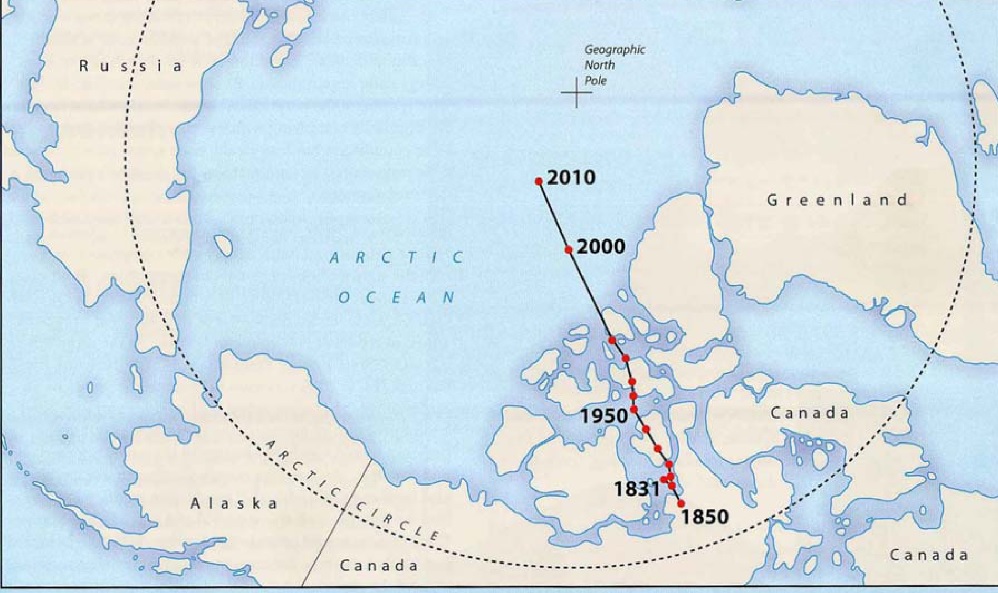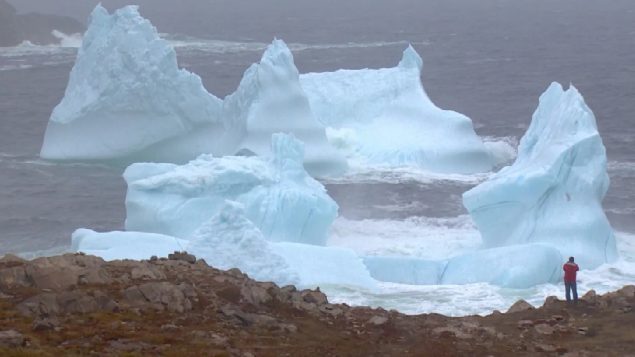You may not know it, but the GPS system in your car, and the apps in your phone depend on the magnetic field of the Earth. But what happens if that field moves? As aviation and marine and all navigation systems also depend on it, potentially there could be trouble.
Well the field is on the move, and a new study suggests human activity is likely behind it.
In our terms, i.e. the average citizen, that movement is not really noticeable at all, but for navigation it is very important, and in scientific terms, it’s huge.

Historical reconstruction of the location of the north magnetic pole since 1831 (NOAA national Geophysical Data Centre-2005 projected to 2010)
The magnetic field and poles are created and moved by the flow of the Earth’s super hot liquid iron core, creating something like a giant bar magnet. It’s also affected to a much lesser degree by changes in things on the surface like ocean currents, wind currents, changes in ocean floor, continental drift etc.
While we’ve noticed that the deep flow has the north magnetic pole meandering slowly around the Canadian Arctic archipelago for the past couple of centuries during the history that humans have been studying it, scientists noticed that movement began a distinct change in the mid 1990’s. It began a distinct and more rapid eastward movement across international waters toward Russia. .
In 2002, with the launch of the Gravity Recovery and Climate Experiment (GRACE) satellites, scientists began measuring changes in gravity over regions of the Earth. Those measurements noted areas of gravitational loss, resulting from loss of mass, such as that from the Greenland ice sheet
A new study was published in the science journal Geophysical Research Letters under the title,Polar Drift in the 1990’s Explained by Terrestrial Water Storage Changes ( access here).
According to the authors, the change in movement of the magnetic pole and acceleration of that movement is explained by the huge loss in mass of ‘terrestrial water storage’ (TWS).
TWS is water stored on land in glaciers and ice sheets and ground water.
The report says that the shifting movement of the poles from 1995-2020 has been about 3mm per year. But that is some 17 times faster than movement between 1981-1995.
The study saying that shifting of billions of tons of weight from the land to the ocean affects the balance on earth. It also says while polar ice melt was likely responsible for the shifting poles in the 1990’s it does not fully explain the latter and increased movement . for that it says, “The other possible causes are TWS change in non‐glacial regions due to climate change and unsustainable consumption of groundwater for irrigation and other anthropogenic activities”.
What does that mean for the average person? Probably not much, but for navigational purposes such as aircraft, the gravitational charts and instruments adjustments have to be updated every few years.
additional information-sources







For reasons beyond our control, and for an undetermined period of time, our comment section is now closed. However, our social networks remain open to your contributions.